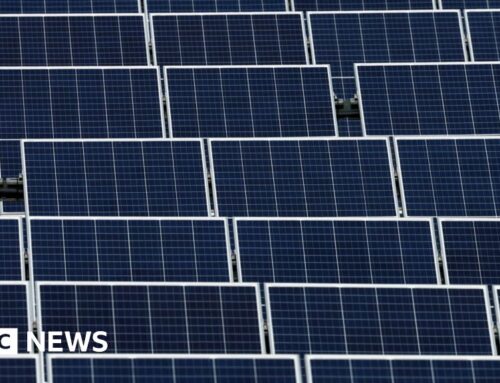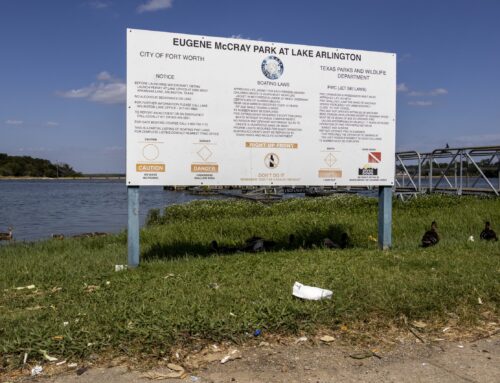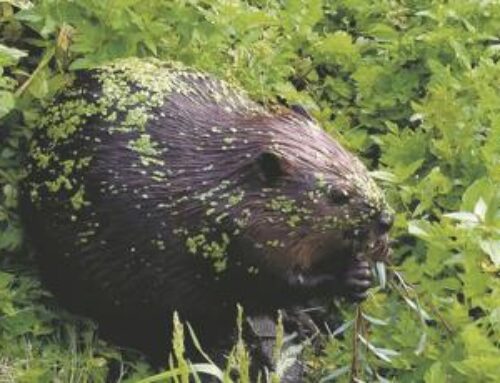How scientists are using environmental DNA to monitor The Gulf of Maine
June 10, 2025
Using environmental DNA to monitor The Gulf of Maine
Scientists are using new techniques to ensure a healthy marine ecosystem.
WINDS TO COME FROM THE STORM – WHICH COULD LEAD TO LANDSLIDES AND SOME FLOODING. THIS WEEK, VICTORIA WISNIEWSKI IS JOINING US TO TALK ABOUT MONITORING SPECIES BEHAVIOR IN THE GULF OF MAINE. SCOTT, WE KNOW THE GULF OF MAINE IS A BUSY PLACE FOR MARINE LIFE AS THEY ARE ALWAYS ON THE MOVE– AND SCIENTISTS MUST TRACK WHAT THEY’RE UP TO IN ORDER TO MAINTAIN A HEALTHY ECOSYSTEM AND ASSIST THE WORKING WATERFRONT. NOW THEY’RE TESTING A TECHNIQUE KNOWN AS E-N-D-A TO STUDY THE PATTERNS OF MARINE LIFE. I WANT YOU TO THINK ABOUT IT AS FORENSIC SCIENCE OF THE OCEAN. SAM BENGS HI, I’M SAM BANKS. I’M A RESEARCH ASSOCIATE HERE AT THE GULF OF MAINE RESEARCH INSTITUTE. COMING UP ON MY ONE YEAR MARK OFFICIALLY BEING HERE, BUT I’VE BEEN AN INTERN FOR ABOUT THREE YEARS. VICTORIA REVERSAL SO SO SAM EDNA IS ACTUALLY ENVIRONMENTAL D-N-A, CAN WE TALK A LITTLE ABOUT WHAT THAT IS? SAM BENGS ABSOLUTELY. SO, EDNA, AS YOU MENTIONED, STANDS FOR ENVIRONMENTAL DNA. AND THAT’S JUST A REALLY SIMPLE TERM TO TIE IT BACK TO WHERE YOU’RE FINDING THIS DNA. IT’S IN THE ENVIRONMENT WHERE ANY SPECIES IS MOVING THROUGH. SO AS WE SIT HERE TALKING, WE’RE SHEDDING EDNA SKIN CELLS, HAIR. IT’S IN THE ENVIRONMENT WHERE WE ARE. SO THINK OF A FISH SWIMMING OUT IN CASCO BAY. THEY’RE SHEDDING SCALES, MUCUS, EXCREMENT IN THE WATER AS THEY MOVE THROUGH. IF WE GO AND JUST COLLECT A WATER SAMPLE, WE CAN FIND ANY DNA MATERIAL IN THAT WATER AND TRY TO TRACE IT BACK TO THAT SPECIES. VICTORIA REVERSAL WHAT CAN EDNA BE COMPARED TO FOR SOMEBODY WATCHING THIS? SAM BENGS WHAT I THINK IS REALLY COOL IS EDNA IS THE SAME TECHNIQUES AS FORENSIC SCIENCE. SO WE EACH HAVE OUR OWN GENETIC FINGERPRINT, RIGHT? MY DNA IS DIFFERENT FROM YOURS. SAME WITH SPECIES IN THE WATER. IT JUST TOOK IS IN THE PAST 15 TO 20 YEARS THAT ECOLOGISTS REALIZED. WHY CAN’T WE USE THESE TECHNIQUES TO ANSWER SOME OF OUR ECOLOGICAL QUESTIONS? WE DO A LOT OF TRADITIONAL SURVEY TECHNIQUES HERE AT GEOMAR. WE USE NETS SAYING THAT’S TRAWL NETS. WE GO OUT ON BOATS TO TRY TO OBSERVE THE FISH POPULATIONS IN CASCO BAY AND IN THE GULF OF MAINE. WHAT EDNA ALLOWS US TO DO IS VALIDATE WHAT WE’RE SEEING IN THE NET, WITH WHAT WE’RE SEEING GENETICALLY. VICTORIA REVERSAL WHAT SAM BENGS SO WE’RE ON THE BOAT COLLECTING WATER, OR WE’RE OUT HIKING DOWN SOME PRESUMPSCOT RIVER COLLECTING WATER. MUCH EASIER TO JUST GO COLLECT WATER RATHER THAN SPEND ALL THE EFFORT. IT IS TO PUT OUT A NET AND ASSESS FOR THE FISH POPULATIONS THAT WAY. THE COLLECTING THE WATER IS THE EASY PART. WE TAKE THAT BACK TO THE LAB AND WE FILTER IT. SO WE’RE STILL IN THIS VALIDATION PHASE OF IS WHAT WE SEE JUST THROUGH THE WATER SAMPLE, MATCHING UP WITH WHAT WE’RE PHYSICALLY SEEING WHEN WE HAVE FISH IN THE NET. VICTORIA WHEN CAN EDNA BE MOST USEFUL TO OBSERVING THE OCEAN AND THE GULF OF MAINE? . ONE EXAMPLE OF WHERE, WHERE SOMETIMES YOU MAY NOT BE ABLE TO PUT A NET, AN AREA WHERE IT’S HARD TO REACH BUT IF YOU COULD GO SAMPLE THAT WATER, TO FIND THEIR DNA SIGNAL, IT’S A WAY TO VALIDATE, IF YOU’RE NOT ABLE TO SEE A SPECIES POTENTIALLY IN A NET. EDNA WILL BE A GREAT TOOL IN THE GULF OF MAINE, AS WE KNOW THAT OUR WATERS ARE WARMING AND OUR ECOSYSTEMS ECOSYSTEMS ARE CHANGING. SO WE KNOW THAT SPECIES ARE SHIFTING AROUND. SOME ARE LEAVING, SOME ARE COMING IN. EDNA IS GOING TO ALLOW US TO MORE QUICKLY ASSESS CHANGES IN THE ECOSYSTEM. YOU KNOW, FOR, FOR COMMERCIAL FISHERMEN, KNOWING WHAT’S AROUND QUICKER IS GOING TO REALLY HELP THEM ADAPT AND BE ABLE TO, GROW WITH THE CHANGING GULF OF MAINE. NOW, VICTORIA SAM MENTIONED THAT E-D-N-A IS STILL IN ITS VERIFICATION STAGE. WHAT DOES THAT MEAN? IT MEANS THAT THERE ARE STILL PIECES TO THE METHOD THAT SCIENTISTS ARE STILL LOOKING INTO. THERE CAN BE ROAD BLOCKS WHEN DETERMINING THE ORIGIN OF THE D-N-A SIGNALS WHEN WORKING IN OPEN WATER. E-D-N-A HAS PROVEN TO BE RELIABLE FOR SMALLER BODIES OF WATER, SUCH AS LAKES AND STREAMS. AND WHEN IT COMES TO THE OCEA
Using environmental DNA to monitor The Gulf of Maine
Scientists are using new techniques to ensure a healthy marine ecosystem.
Think of it as the forensic science of the ocean. Scientists at the Gulf of Maine Research Institute are doing just that. eDNA stands for environmental DNA, which Sam Bengs at the Gulf of Maine Research Institute says, “Think of a fish swimming out in Casco Bay. They’re shedding scales, mucus, and excrement in the water as they move through. If we go and just collect a water sample, we can find any DNA material in that water and try to trace it back to that species.”She explains that it is a positive alternative to deploying nets out in the Gulf of Maine, allowing a streamlined process that saves them time, research funds, as well as avoids stress to the marine environment, while still being able to track the movement of species ranging from fish to sharks. It begins with a sample of water that goes into the lab and goes through a process of filtering in order to isolate the DNA.”We’re on the boat collecting water, or we’re out hiking down the Presumpscot River, collecting water.”Bengs describes the process as similar to forensic science, as fish share a unique genetic fingerprint that identifies them.At this time, the process of collecting eDNA is used on top of traditional methods of deploying nets, and this is due to the variability in ocean water. When collecting eDNA, challenges are likely to arise when determining the origin of the water; therefore, at this time, it is used to validate net findings, adding an additional layer of confidence to their research. Though the process of collecting eDNA samples on a smaller scale in lakes or streams has proven solid. Bengs explains that the process is beneficial in circumstances “where sometimes you may not be able to put a net, an area where it’s hard to reach.” She adds that eDNA will continue to be a great tool for monitoring changes within our ecosystem, especially amid a changing climate, and will even assist the working waterfront, adding ” is going to really help adapt and be able to grow with the changing Gulf of Maine.”
Think of it as the forensic science of the ocean. Scientists at the Gulf of Maine Research Institute are doing just that. eDNA stands for environmental DNA, which Sam Bengs at the Gulf of Maine Research Institute says, “Think of a fish swimming out in Casco Bay. They’re shedding scales, mucus, and excrement in the water as they move through. If we go and just collect a water sample, we can find any DNA material in that water and try to trace it back to that species.”
She explains that it is a positive alternative to deploying nets out in the Gulf of Maine, allowing a streamlined process that saves them time, research funds, as well as avoids stress to the marine environment, while still being able to track the movement of species ranging from fish to sharks.
It begins with a sample of water that goes into the lab and goes through a process of filtering in order to isolate the DNA.
“We’re on the boat collecting water, or we’re out hiking down the Presumpscot River, collecting water.”
Bengs describes the process as similar to forensic science, as fish share a unique genetic fingerprint that identifies them.
At this time, the process of collecting eDNA is used on top of traditional methods of deploying nets, and this is due to the variability in ocean water. When collecting eDNA, challenges are likely to arise when determining the origin of the water; therefore, at this time, it is used to validate net findings, adding an additional layer of confidence to their research.
Though the process of collecting eDNA samples on a smaller scale in lakes or streams has proven solid.
Bengs explains that the process is beneficial in circumstances “where sometimes you may not be able to put a net, an area where it’s hard to reach.” She adds that eDNA will continue to be a great tool for monitoring changes within our ecosystem, especially amid a changing climate, and will even assist the working waterfront, adding “[eDNA] is going to really help [fishermen] adapt and be able to grow with the changing Gulf of Maine.”
Search
RECENT PRESS RELEASES
Related Post




